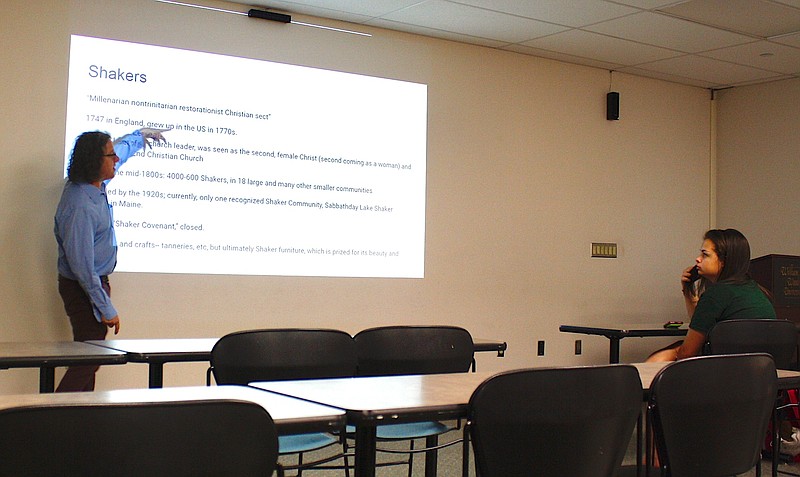William Woods professor Matt Dube explored parallels between the intentional communities in Jessica Bruder's "Nomadland" and those in Missouri.
The English professor held this lecture Thursday evening as part of the 2019 One Read book club program by the Daniel Boone Regional Library. Bruder's book was this year's selection, and a number of lectures and discussions have been held on the non-fiction book's themes.
"Intentional communities are communities that people enter into intentionally, rather than just being born in your community," Dube said. "They are communities where people who are already in the community have agreed on certain standards and behaviors that allow them to come in together."
Dube said he has always been interested in "subcultures and alternative communities." He decided to do a lecture on the topic of intentional communities after reading and enjoying this year's One Read pick, despite finding it "depressing."
"Nomadland" tells the stories of modern "nomads" throughout the United States - people of retirement age and beyond who live and work out of their RVs as a means of survival. One community that came out of this was known as the "Rubbertramp Rendezvous."
"(The 'Rubbertramp Rendezvous') is a two-week event in relatively unpopulated Arizona," Dube explained. "It's organized by Bob Wells and basically provides people with tips and tricks about living out of your car."
The two-week event has since grown into a year-round, diffuse community of like-minded individuals who come together for the annual rendezvous. Dube said this is similar to how intentional communities often form.
He examined a variety of famous intentional communities throughout American history: the Fruitlands, Brook Farm and the Shakers. Additionally, Dube took a look into the assortment of intentional communities within Missouri.
"There are more than 50 intentional communities in Missouri. Did any of you guys know that? It's kind of wild," Dube said.
He touched on East Wind in Tecumseh, a socialist commune near the Arkansas border. Another notable intentional community he noted was the Dancing Rabbit ecovillage in Rutledge in the northeast corner of the state.
"An ecovillage is a whole movement where these villages try to make an impact on the environment and they try to be energy independent. So, all of the energy (Dancing Rabbit) has is generated through wind power," Dube said.
The final intentional community Dube touched on was a bit more local. Shepherdsfield is a Christian community located just outside Fulton on County Road 305. Dube was interested in learning more about the community, but he said their online presence has "largely disappeared."
"It's interesting that there's probably still this group, Shepherdsfield, in Fulton lurking around the edges of Callaway," Dube said.
Dube said throughout history and in "Nomadland," there is a bit of a bleak outlook for intentional communities. Many intentional communities have failed from a lack of resources and members. However, Dube was optimistic about the concept and said he finds these communities appealing and thinks it's a very natural thing to do.
"It's exciting when people are idealistic about the way they want to live their lives and when they try to live out their values and ideals," Dube said.

